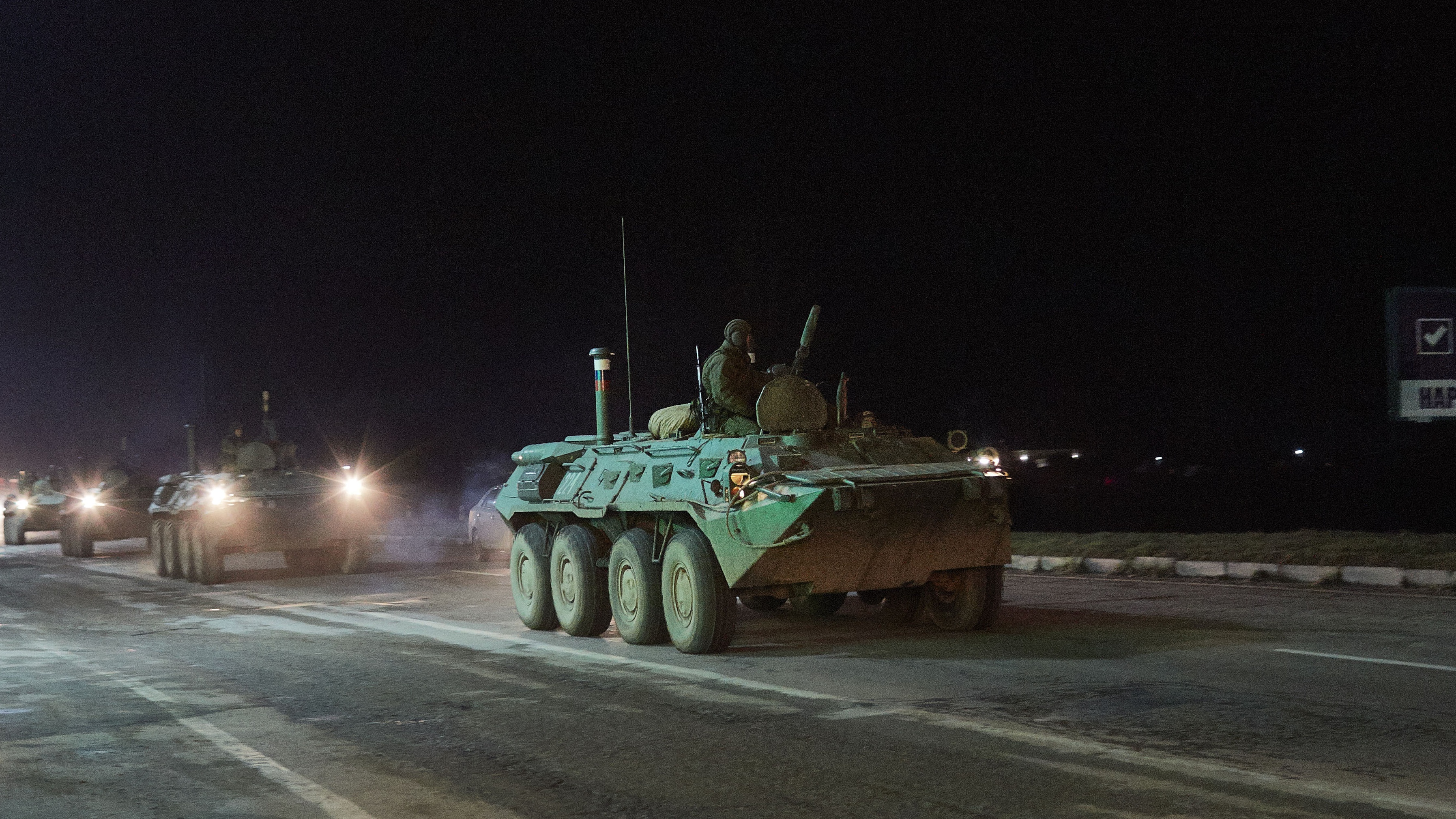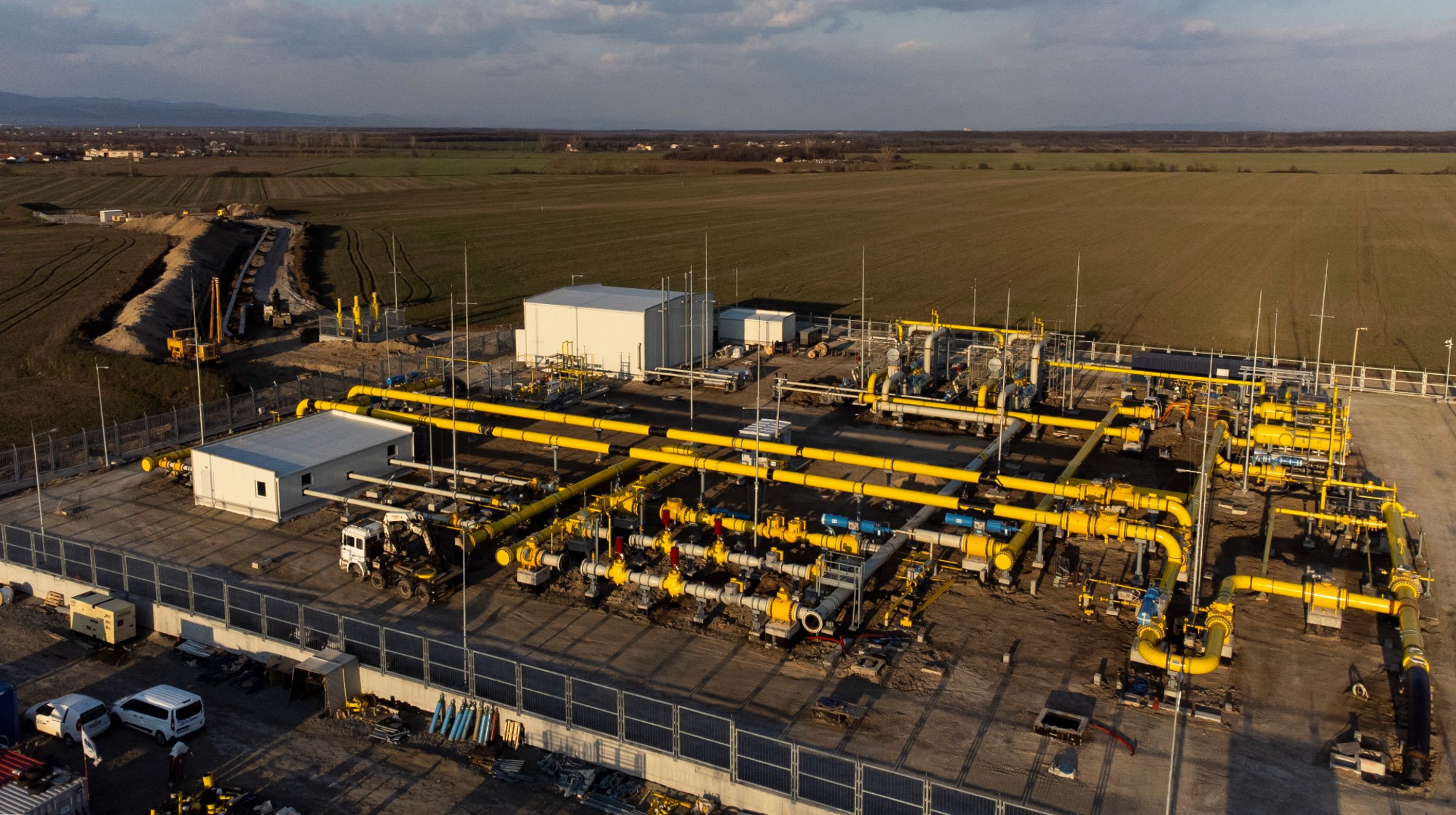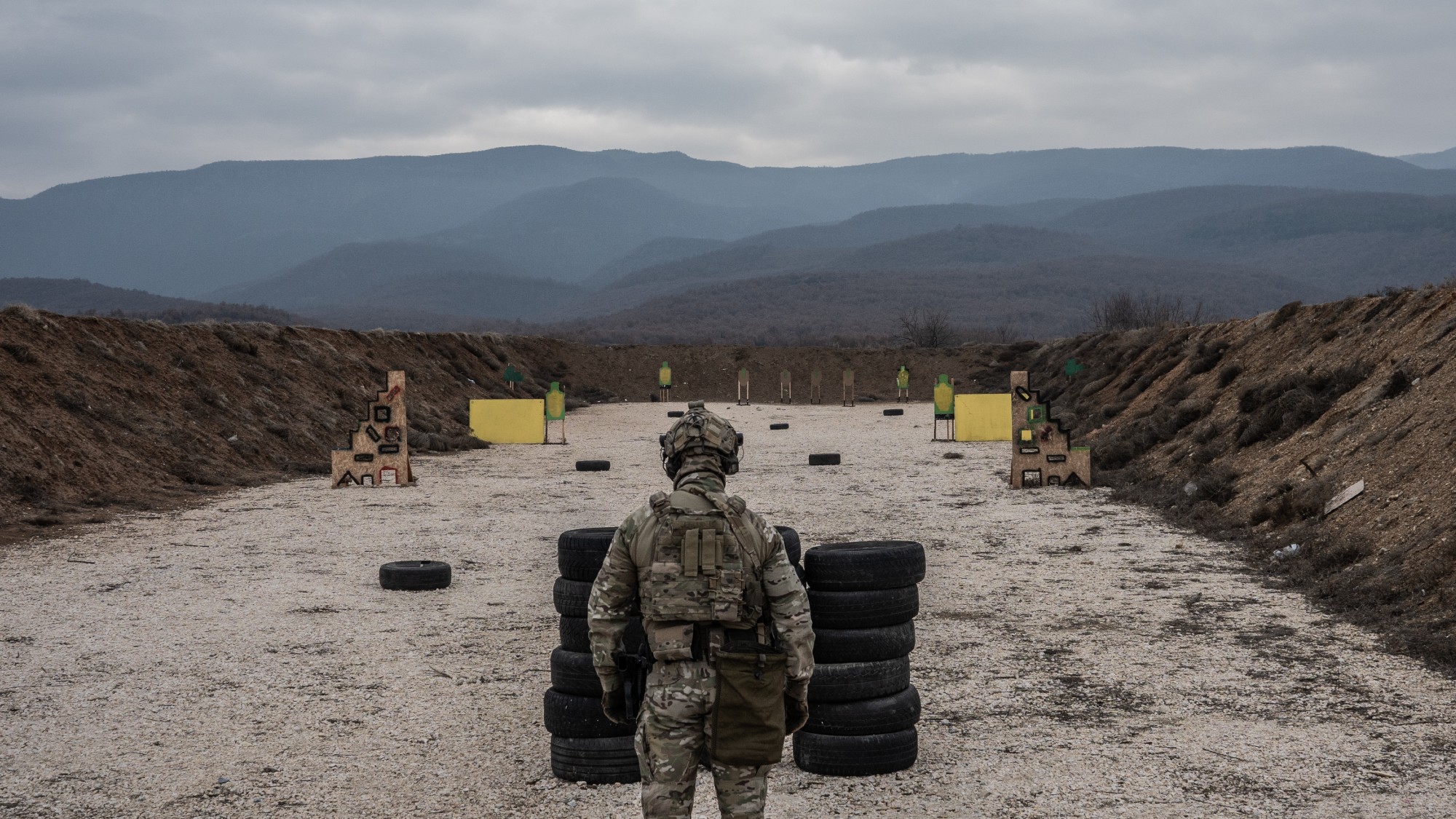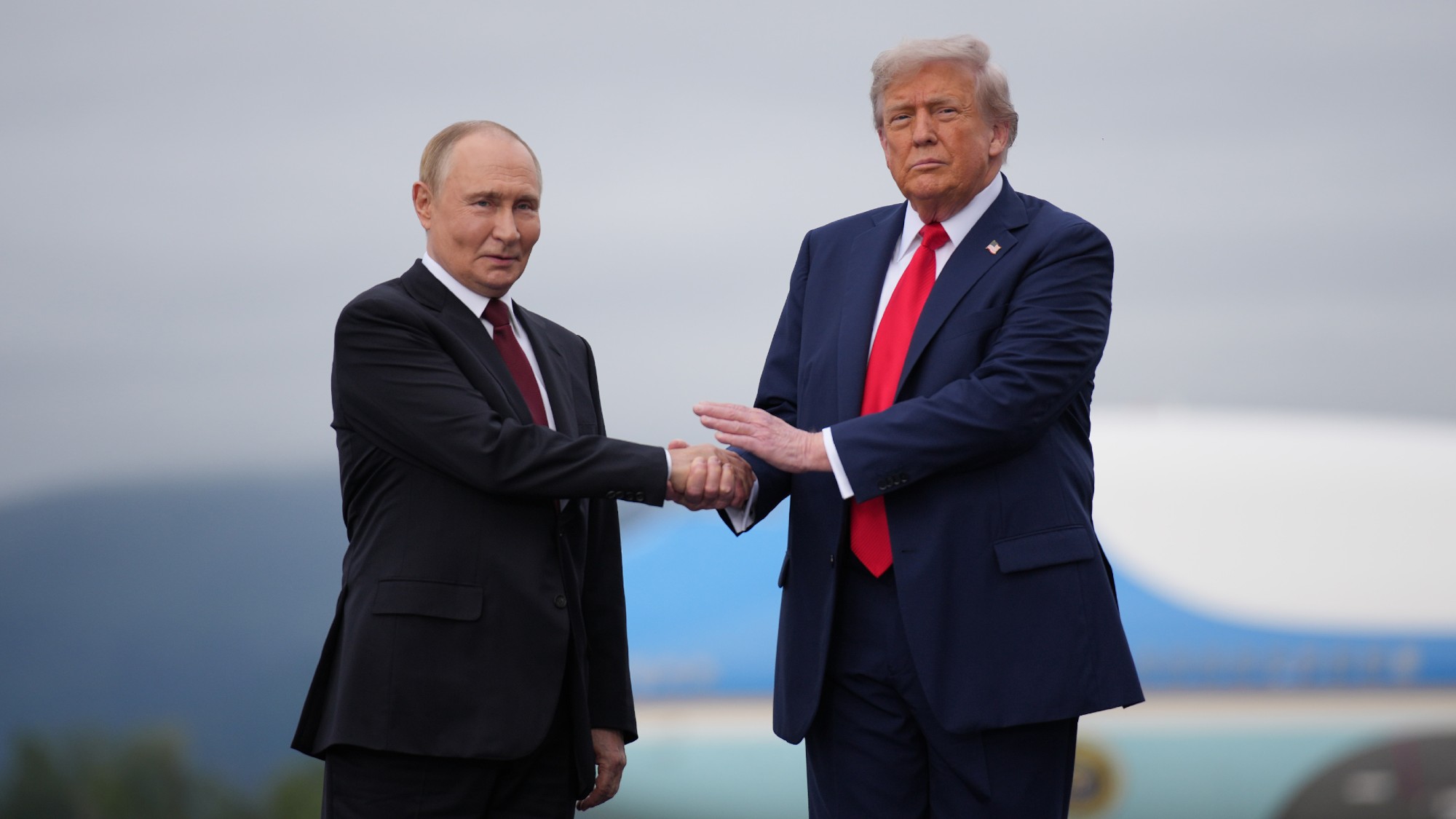Putin and Russia’s territorial ambitions
Moscow has tried to claim a string of regions since the collapse of the Soviet Union

As the Russian invasion of Ukraine enters its fifth month, Moscow’s forces now have control over the eastern city of Lysychansk and the entire region of Luhansk in the Donbas.
Having taken Luhansk, Russian President Vladimir Putin is one step closer to his stated aim of “liberating” the whole of the Donbas region, of which Luhansk makes up roughly half.
But Moscow’s attempts to seize the Donbas is only one of several territorial disputes involving Russia in recent years.
The Week
Escape your echo chamber. Get the facts behind the news, plus analysis from multiple perspectives.

Sign up for The Week's Free Newsletters
From our morning news briefing to a weekly Good News Newsletter, get the best of The Week delivered directly to your inbox.
From our morning news briefing to a weekly Good News Newsletter, get the best of The Week delivered directly to your inbox.
Ukraine
Putin’s original aim was “to overrun Ukraine and depose its government, ending for good its desire to join the Western defensive alliance Nato”, explained the BBC. But he has since abandoned efforts to capture the capital of Kyiv after months of failures and has now turned the bulk of Russia’s forces towards capturing the Donbas region of eastern Ukraine.
Referring mainly to the Luhansk and Donetsk regions of Ukraine, more than a third of the Donbas is already under Russian control, due to a proxy war that began in 2014 – but Moscow now wants to take the whole region. If they seize the Donbas they will be able to create a land corridor along the south coast, creating a bridge from Crimea to the Russian border.
Crimea
Russia mobilised its troops and seized control of Crimea in February 2014, after Ukrainians had deposed their pro-Russian president, Viktor Yanukovych, in a wave of civil unrest known as the Maidan uprising.
Yanukovych fled to Russia after the months-long uprising, “which saw security forces shoot dead at least 77 protesters in Kyiv”, explained the i news site. The former president’s ousting provoked “immediate unrest” in the east of Ukraine, bordering Russia, where pro-Kremlin sentiments are higher than in the rest of the country.
A free daily email with the biggest news stories of the day – and the best features from TheWeek.com
Amid pro-Russian demonstrations in the Crimean port city of Sevastopol days after Yanukovych fled, “masked Russian troops without insignia moved to capture strategic sites across Crimea”.
A referendum took place on 16 March 2014, in which Moscow claimed 96.77% of Crimeans voted to become part of Russia. The outcome of the referendum was rejected by the vast majority of the international community, including the European Union, which branded it “illegal and illegitimate”.
But despite the international outcry, Russia formally incorporated Crimea as two Russian federal subjects, the Republic of Crimea and the federal city of Sevastopol, two days later.
South Ossetia
South Ossetia, officially part of Georgia, has been a “source of tension” since the break-up of the Soviet Union, and was the site of a short war between Russia and Georgia in 2008, said the BBC.
Separatist sentiment “burgeoned” in South Ossetia under nationalist leader Zviad Gamsakhurdia, who came to power in the dying days of the Soviet Union. After several outbreaks of violence, the region declared its intention to secede from Georgia in 1990 and declared independence in 1992.
There was sporadic violence in the region between Georgian and Ossetian fighters until the summer of 1992, “when agreement on the deployment of Georgian, Ossetian and Russian peacekeepers was reached”, the BBC explained.
President Mikheil Saakashvili became Georgian president in 2004 and immediately made clear “his intention to bring South Ossetia and another breakaway region Abkhazia to heel”. He offered them autonomy, which was rejected in a 2006 referendum.
In August 2008, after a week of clashes between Georgian troops and separatist forces, Georgia “launched a concerted air and ground assault attack” on South Ossetia’s main city, Tskhinvali. Russian forces then entered South Ossetia, driving back the Georgian military and briefly entering Georgia itself.
During the five-day conflict, nearly 850 people were killed and some 35,000 Georgians were left homeless, according to an official EU fact-finding report.
Transnistria
Transnistria, also commonly known as Transdniester, is a narrow strip of land between the east bank of the Dniester River and Moldova’s border with Ukraine.
It has a population of about 470,000 people, with “ethnic Russians and Ukrainians together” outnumbering ethnic Moldovans in the area, said Al Jazeera.
While it is internationally recognised as part of Moldova, the Russian-backed breakaway territory has been under the control of separatist authorities since 1992. The collapse of the Soviet Union triggered a conflict between the newly independent Republic of Moldova and separatists who wanted to maintain Soviet ties.
No country recognises the region as independent, including Russia, but “Moldovan authorities have no control over the region, which functions akin to a separate state”, said the broadcaster.
The Moldovan government has recently said it is doing everything possible to prevent the unrecognised territory from threatening Ukraine.
During a press conference late last month between Moldovan President Maia Sandu and Ukrainian President Volodymyr Zelenskyy, Sandu said: “We are closely monitoring all events in Transnistria and do not see any threats. We are doing everything we can to prevent this separatist region from posing a threat to Ukraine and Moldova.
“Ukraine and Moldova should maintain regular dialogue on security issues that affect our states. We agreed to work together to maintain stability and avoid provocations aimed at destabilising the situation.”
-
 All roads to Ukraine-Russia peace run through the Donbas
All roads to Ukraine-Russia peace run through the DonbasIN THE SPOTLIGHT Volodymyr Zelenskyy is floating a major concession on one of the thorniest issues in the complex negotiations between Ukraine and Russia
-
 US offers Ukraine NATO-like security pact, with caveats
US offers Ukraine NATO-like security pact, with caveatsSpeed Read The Trump administration has offered Ukraine security guarantees similar to those it would receive from NATO
-
 How Bulgaria’s government fell amid mass protests
How Bulgaria’s government fell amid mass protestsThe Explainer The country’s prime minister resigned as part of the fallout
-
 Europe sets 2027 deadline to wean itself from Russian gas
Europe sets 2027 deadline to wean itself from Russian gasIN THE SPOTLIGHT As negotiators attempt to end Russia’s yearslong Ukraine invasion, lawmakers across the EU agree to uncouple gas consumption from Moscow’s petrochemical infrastructure
-
 Is Europe finally taking the war to Russia?
Is Europe finally taking the war to Russia?Today's Big Question As Moscow’s drone buzzes and cyberattacks increase, European leaders are taking a more openly aggressive stance
-
 Pushing for peace: is Trump appeasing Moscow?
Pushing for peace: is Trump appeasing Moscow?In Depth European leaders succeeded in bringing themselves in from the cold and softening Moscow’s terms, but Kyiv still faces an unenviable choice
-
 Femicide: Italy’s newest crime
Femicide: Italy’s newest crimeThe Explainer Landmark law to criminalise murder of a woman as an ‘act of hatred’ or ‘subjugation’ but critics say Italy is still deeply patriarchal
-
 Brazil’s Bolsonaro behind bars after appeals run out
Brazil’s Bolsonaro behind bars after appeals run outSpeed Read He will serve 27 years in prison


